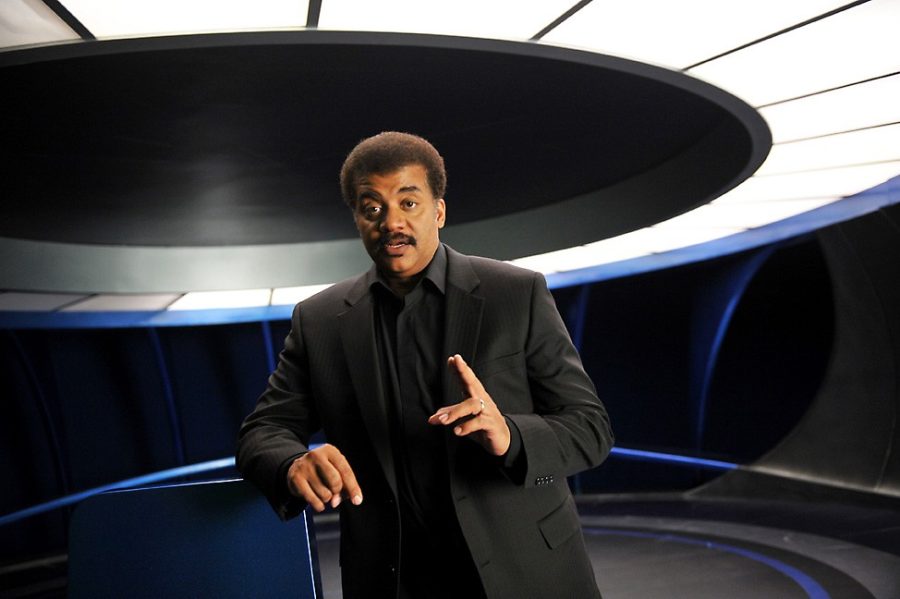Fox debuted its reboot of Carl Sagan’s beloved “Cosmos: A Personal Voyage” mini-series on Sunday night. The 13-part remake “Cosmos: A Spacetime Odyssey” is hosted by esteemed astrophysicist Neil deGrasse Tyson.
An introduction by President Barack Obama began the show. He stressed the importance of curiosity and exploration, and paid homage to Sagan while encouraging this new generation of viewers to open their minds to science.
“The next great discovery could be yours,” Obama said.
From the first installment of the series, “Standing Up in the Milky Way,” it’s clear who the target audience is. The show is elementary in its science and storytelling because it’s geared toward younger viewers. However, Tyson’s tone is not condescending; it is about teaching, not lecturing.
Still, the show has a multitude of problems.
Sagan’s “Cosmos” was lauded for its amazing special affects. Artistically, this first episode was a dud.
It was too Hollywood-like, starting with its title “A Spacetime Odyssey,” likely an homage to Stanley Kubrick’s classic film “2001: A Space Odyssey.” Tyson cruises around the solar system in a spaceship shaped like Boba Fett’s vessel from the “Star Wars” movies. The show unintentionally draws laughs when it depicts Tyson sitting Emperor Palpatine-style, looking out the front window of the ship.
With Tyson cruising around space, striking the right tone with the special effects is a necessity. “Standing Up in the Milky Way” doesn’t quite get there.
It’s almost as if the colors are too vibrant. The show looks too much like the newer “Star Wars” movies. It should look more like “Gravity,” which didn’t overwhelm with vibrancy, but rather produced a darker outer space that felt more real. Budgetary issues might be to blame for this. The special effects aren’t Syfy channel horrible; they’re just a little off.
Later in the episode, Tyson introduces us to Giordano Bruno, a 16th century Franciscan monk who was burned at the stake for his scientific beliefs. His story is in dull 2D animation. Tyson’s storytelling prose is fine, but the on-screen image is too bland. It’s boring, something a show like this should never be.
Worse than the 2D imagery, Bruno’s story reeks of cheap propaganda. Sagan was also skeptical of religion, but Tyson is much more militaristic on the subject. He even takes a dig at Bruno, pointing out that he was not a man of science but a man of faith, and that his correct vision of the cosmos was a lucky guess. This isn’t the right medium to paint religious people as closed-minded psychos, but that’s what the show does.
This is a show that should be inclusive, informing the uninformed about the nature of the galaxy. The history of astronomy should be re-visited, but this isn’t an atheist sermon.
But, for all its faults, the show isn’t a disaster. The purpose of “Standing Up in the Milky Way” is to illustrate just how small humans are. It does this well, as Tyson successfully drives home how young and small the human race is in the grand scheme of things. The outer space special effects aren’t ideal, but the show introduces a virtual cosmic calendar that is perfect.
Though it was a rough maiden voyage for “Cosmos: A Spacetime Odyssey,” its prestigious host gives the show legitimacy in moving forward. Tyson is a star in the science world, and it’s easy to see why. Born in 1958, he is a byproduct of the “Space Race” era and was in his twenties when Sagan’s “Cosmos” debuted. He’s articulate and smart, but he isn’t boring or condescending. When he’s not depicted ridiculously like a “Star Wars” character, he fits in nicely on screen, much like Sagan. And by the end of the episode, he has laid out the right message.
“Follow the evidence wherever it leads,” Tyson said, “and question everything.”









